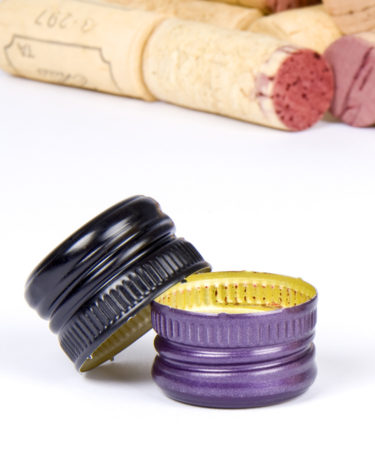The French – who most often proudly seal their wine with a cork – invented the screw cap. Yep, that’s a fact. In the late 1950s French researchers created a product called “Stelcap vin,” a screw cap that was repurposed from the caps used to seal bottles in the spirits industry, in the hopes that the new seal might do away with that villanous cork taint. But reaction to the cap replacing the cork didn’t go so well in wine circles and research was halted. Many thought the screw cap was dead.
Then in 1970, Australian Consolidated Industries (ACI) purchased the rights to this product and named it Stelvin. At the time Australia was a quiet, yet burgeoning, wine region and while they were on the cusp of international domination, when the rights to the wine screw cap were purchased they were still relatively unknown on the world stage. But this purchase was a prime example of the forward thinking minds that would make Australian wine a worldwide power.
Meanwhile, here in the United States our exposure to the screw cap was in the form of what is, these days, jokingly considered “hobo wine” or the wine on which you first try to get drunk. Boone’s Farm anyone? Mad Dog 20/20? Just like the stigma of good wine coming out of a box, the idea of well made wine under screw cap was unthinkable. Meanwhile, in Australia, innovation was well on its merry way.
A screw cap is made of two components: an aluminum cap and a Polyethylene (wadding) liner in the top of the cap top that’s covered with a foil layer. By 1976 ACI was experimenting with three different widths of this wadding, the same material used for strips of film or plastic supermarket bags, and was using a cork closure as a control. After tons of research, it was concluded that a foil layer controlling the gas exchange, overlain with the right wadding material at the right width was ideal for a bottle closure; in fact, it was just as good as a cork. YAY!
To take it a step further and truly prove the screwcap was just as good as its cork rival, in 2000 a large group of winemakers in Australia’s Clare Valley, known for their Rieslings, sealed 250,000 bottles of said wine and let them age, checking them here and there. By 2006 the wines were aging wonderfully and showing indications that this new closure would also be ideal for storing and aging wines for long periods in bottle. This was an ambitious move that paid off. In 2001, New Zealand also began its screw cap initiative and, by the 2004 vintage, 70% of the country’s wine was released under Stelvin closures.
Flash forward to present day and the acceptance of the screw cap has taken hold in the last decade or so, prompting many winemakers around the world to completely do away with cork. The most well known winemaker is probably our country’s most innovative wine geek, Randall Grahm of Bonny Doon, who, in 2002, held a funeral for the cork in New York City and San Francisco, declaring the screw cap as his closure of choice.
But even though geeks are accepting the screw cap in droves, there’s still an on-going debate as to how dramatically a screw cap impacts how a wine ages – remember the Australian test only dealt with wine aged over a couple of years, not decades. The question is whether as a wine ages the evolution of the wine occurs because small amounts of oxygen are allowed to interact with it due to the small pores in a cork that let teeny tiny amounts of oxygen in – which couldn’t occur with a screw cap because it forms an airtight seal – or if the tiny amounts of oxygen have nothing to do with a wine’s evolution at all, because that evolution is caused by the wine interacting with itself.
For our purposes as consumers we should not fear the screw cap, since most of us aren’t concerned with aging wine for decades. In general, winemakers will use the screw cap enclosure for the everyday drinking wine within their line up, saving the cash flow for corks in their higher end bottles. There are some factors involved to switch to screw cap, including investing in new equipment or attachments, but overall the price of a screw cap is less than that of a cork, saving the winemaker money in the long-term. And don’t be turned off by the term “everyday wine” or “entry level.” A great winemaker will often offer wines at this level and price point to tease you into falling in love with them, thereby compelling you to indulge in their more focused wines down the road. It’s a win-win.
So go ahead and crack, not pop, that beautiful bottle of wine and enjoy! If you don’t like the sound and want your friends to to be impressed at a dinner party, just take a napkin fold it over the cap and twist. Or just own it with a satisfied CRACK and smile in the face of adversity!>
